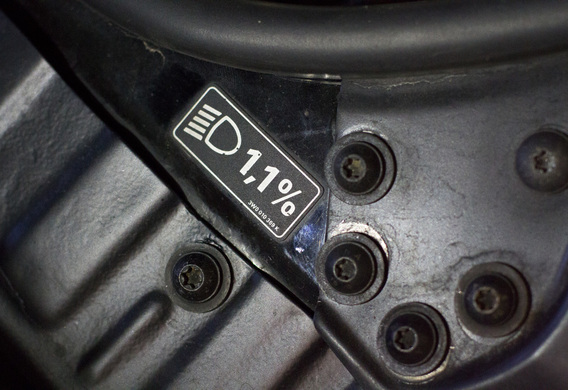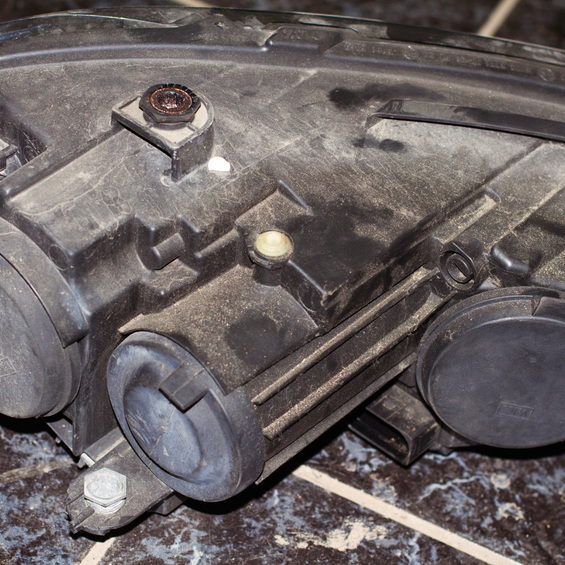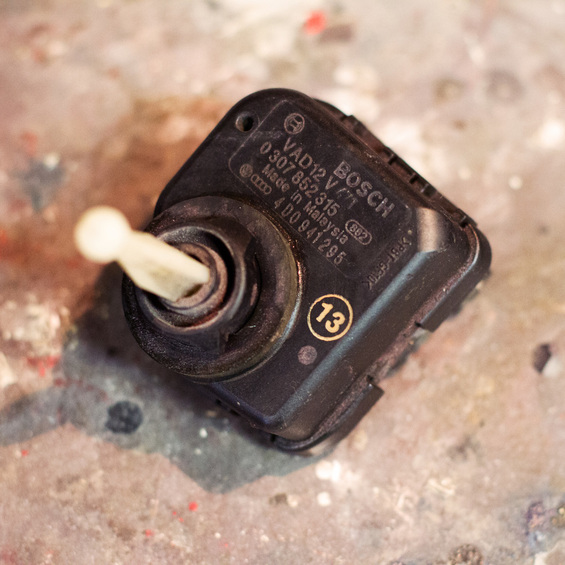
Many motorists, who had to carry heavy loads on their cars, knew that the more the car was loaded, the higher the headlights began to shine. In addition, everyone is familiar with the situation when drivers of many oncoming cars drive on the uneven road, dazzle even by the passing lights of the headlights. To combat this kind of trouble, a corrector of the headlights was created. History of the development of headlamp proofreaders
History of the development of headlamp proofreaders
The images of modern proofreaders appeared on the first cars, bright "floodlights" that needed adjustment. The simplest cable systems and hydraulic systems were used to enable the driver to lower or raise the headlamps. Without exaggeration, it can be said that all modern correctors are descendants of the first systems.
The first modern headlights systems appeared in the 1950s in luxury cars
The first modern headlights systems appeared in the 1950s on luxury cars. The device was mounted directly into the main body of the headlamp and was able to change the angle of the light beam before the journey began. The system has improved over the next two decades, and in the 1970's, it was possible to adjust the direction of the headlights from the driver's seat.
In the mid-1990s, every third car crash in Europe occurred at night, with many accidents causing many accidents
Over time, it became clear that even the best eye could not help to set up the headlights perfectly, depending on the load on the car (not to mention adjusting for the unevenness of the road). This was the first time that engineers began to think about creating automatic systems that would determine the optimal position of the luminous flux.
In the mid-1990s, studies showed that every third car accident in Europe occurs in a dark time, with the cause of many accidents being the imperfection of the parent optics. The solution has been found: since 1999 the presence of a corrector of headlamps is obligatory on all cars produced in Europe.
Types of headlamps and features of headlamps
So, the headlamp proofreader is a device used to control the direction of the light of the headlamps and the cut-off line.
Depending on the method of adjustment, all headlamps may be divided into manual (forced) and automatic. The first, as you can see from the name, is controlled by the driver himself, the second-the electronics. It is extremely difficult to adjust the luminous flux at the time of movement, so all changes are usually made before the start of the trip. Autos are quietly adjusting to the road situation and are working on the move.

Automatic proofreaders are either quasi-static or dynamic depending on the principle of operation. The former react to the different vehicle body tilting angles related to the reduction or increase in load (be it carried baggage or "overloads" at high speeds). This system is not very fast and responsive, but it is considered more reliable because it contains fewer complex nodes and electronics. The principle of operation of the quasi-static corrector is such that sensitive sensors capture information about the position of the car body, transmit it to the control unit, and then use the executive mechanisms to set the desired inclination angle.
The main advantage of the dynamic system is the speed and accuracy of the reaction to the slightest changes in the position of the car body
Dynamic systems are noticeably more expensive than their quasi-static relatives. They are obliged by their appearance to powerful xenon headlamps whose luminous flux may not just be uncomfortable, but even dangerous to the surrounding adjustment.
The main advantage of the dynamic system is the speed and accuracy of the reaction to the slightest changes in the position of the car body. The light-flow correction process takes a fraction of a second, the system allows the beam to be held at the desired level all the time regardless of whether the car is being driven or rotated. The dynamic system also allows the maintenance of the specified level of the light beam when driving on the rough road. But this type of proofreader, as mentioned above, is more expensive than quasi-static, it is difficult to install it, if it is not provided by the manufacturer, it is more difficult to adjust, and the abundance of used electronics and sophisticated small mechanisms makes it difficult to maintain. In general, such systems are part of the basic equipment of luxury cars or full-size SUVs.
The following types of actuators are used: mechanical, hydraulic, pneumatic and electromechanical. Based on the names, you can understand how and how they function. Mechanical correctors shall change the position of the headlamp by means of special thrust and joints, and hydraulic and pneumatic pressure shall be used for these purposes the pressure of the air or the liquid. Power-driven actuators use a special retractor engine which adjusts.








